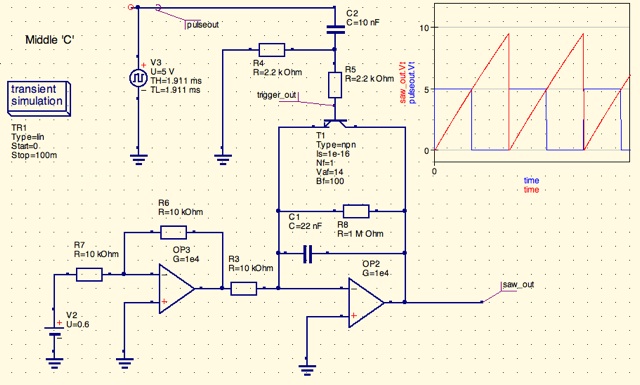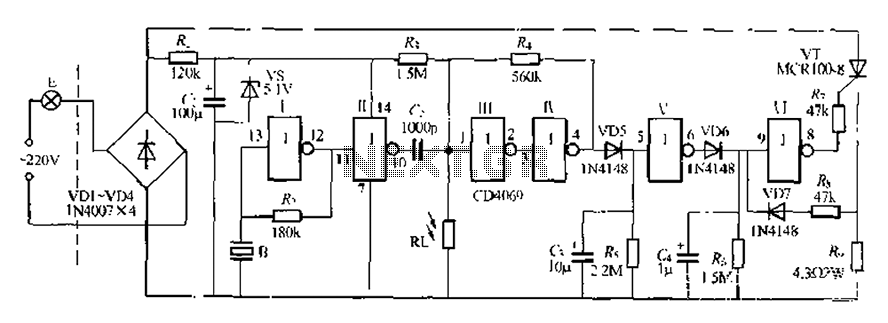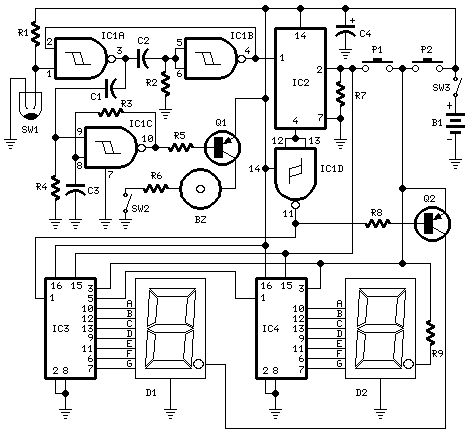
Digital Compass

A four-output Hall sensor combined with several logic gates produces this digital compass. The NOR gates resolve the four Hall outputs into eight distinct compass directions. LEDs to indicate direction are driven by eight inverters. A power supply for 5.25 to 18 Vdc operation is shown in the figure.
The digital compass circuit utilizes a four-output Hall effect sensor to detect magnetic fields and determine directional orientation. The sensor outputs are processed through a series of NOR gates, which serve to combine the four distinct outputs into eight unique states, effectively representing the eight cardinal and intercardinal directions (North, Northeast, East, Southeast, South, Southwest, West, and Northwest).
Each of the eight outputs from the NOR gates corresponds to a specific direction, illuminating an LED indicator for that direction. The LEDs are driven by inverters, which ensure that the output signal is suitable for activating the LEDs, providing a visual representation of the current heading.
The circuit is powered by a versatile power supply capable of operating within a range of 5.25 to 18 Vdc. This flexibility allows the digital compass to be integrated into various applications, from portable devices to fixed installations. The schematic design is crucial for ensuring the correct configuration of components, including the Hall sensor, NOR gates, inverters, and power supply connections, to achieve reliable performance in direction sensing.
In summary, this digital compass circuit exemplifies an efficient integration of sensor technology and digital logic to produce a user-friendly directional indicator, suitable for a wide range of electronic applications. A four output Hall sensor combined with a few logic gates produce this digital compass. The NOR gates resolve the four Hall outputs into eight distinct compass directions. LEDs to indicate direction are driven by eight inverters. A power supply for 5.25- to 18-Vdc operation is shown in the figure.
The digital compass circuit utilizes a four-output Hall effect sensor to detect magnetic fields and determine directional orientation. The sensor outputs are processed through a series of NOR gates, which serve to combine the four distinct outputs into eight unique states, effectively representing the eight cardinal and intercardinal directions (North, Northeast, East, Southeast, South, Southwest, West, and Northwest).
Each of the eight outputs from the NOR gates corresponds to a specific direction, illuminating an LED indicator for that direction. The LEDs are driven by inverters, which ensure that the output signal is suitable for activating the LEDs, providing a visual representation of the current heading.
The circuit is powered by a versatile power supply capable of operating within a range of 5.25 to 18 Vdc. This flexibility allows the digital compass to be integrated into various applications, from portable devices to fixed installations. The schematic design is crucial for ensuring the correct configuration of components, including the Hall sensor, NOR gates, inverters, and power supply connections, to achieve reliable performance in direction sensing.
In summary, this digital compass circuit exemplifies an efficient integration of sensor technology and digital logic to produce a user-friendly directional indicator, suitable for a wide range of electronic applications. A four output Hall sensor combined with a few logic gates produce this digital compass. The NOR gates resolve the four Hall outputs into eight distinct compass directions. LEDs to indicate direction are driven by eight inverters. A power supply for 5.25- to 18-Vdc operation is shown in the figure.





